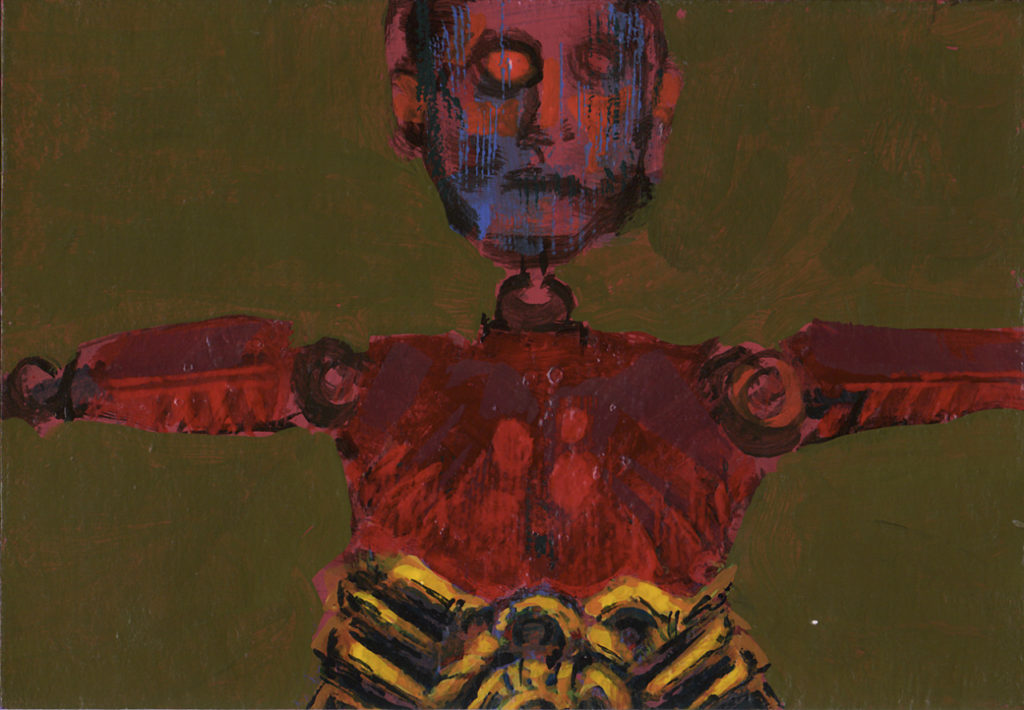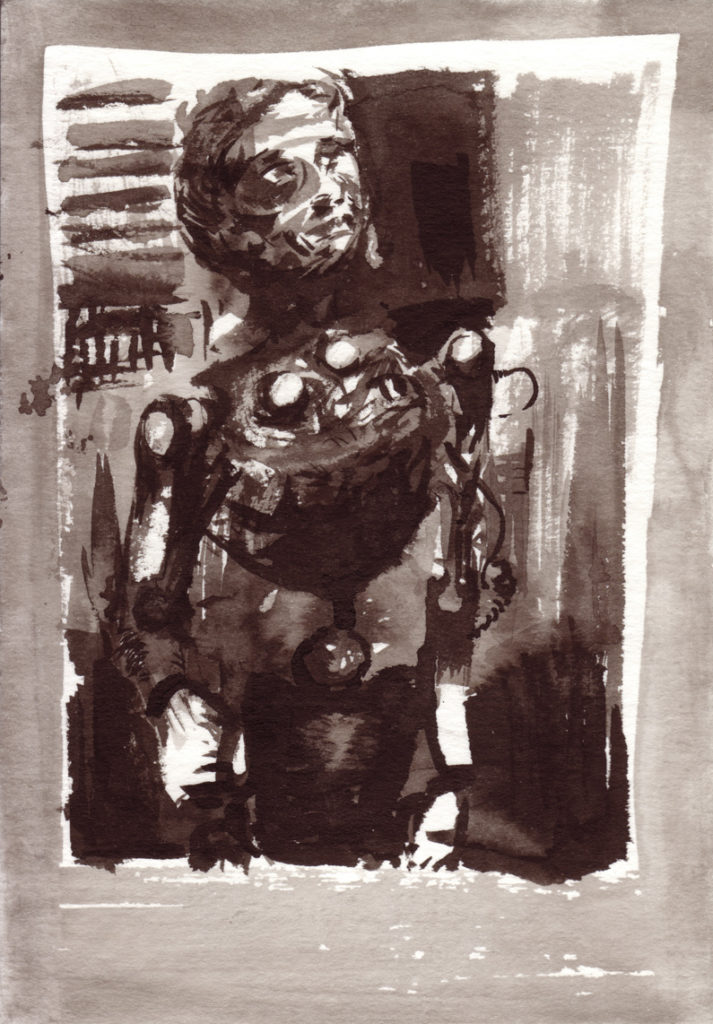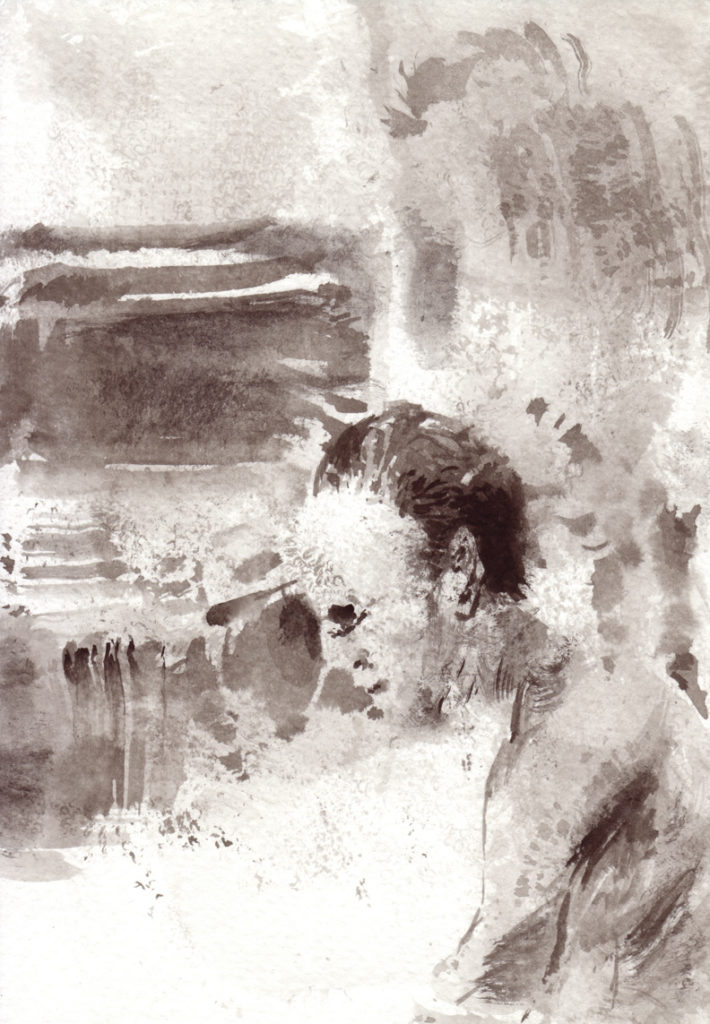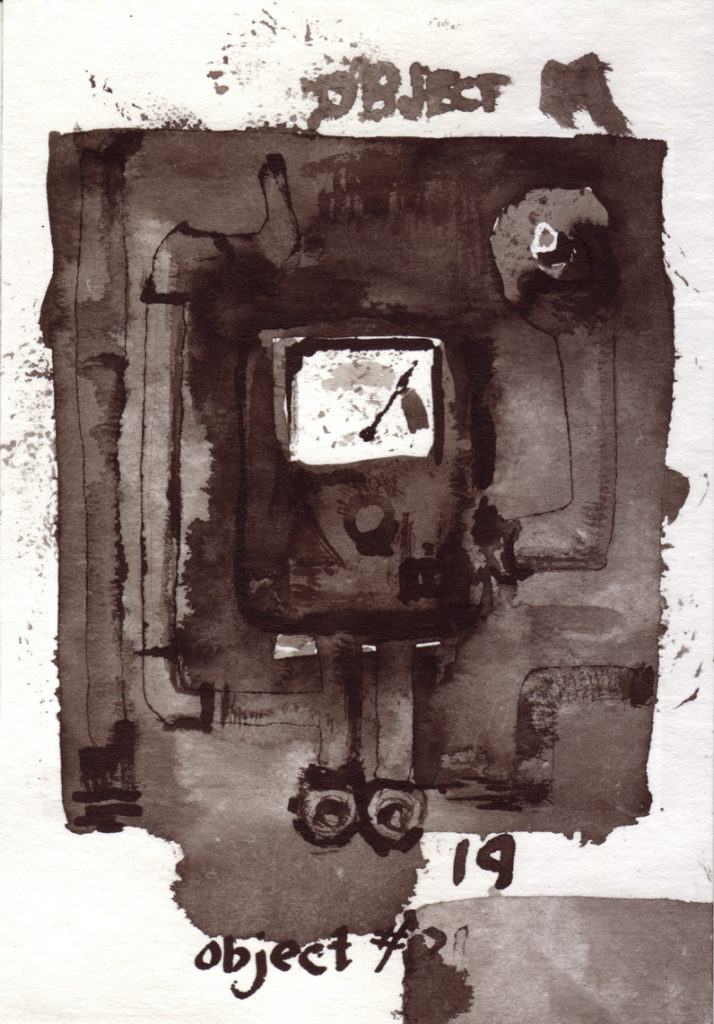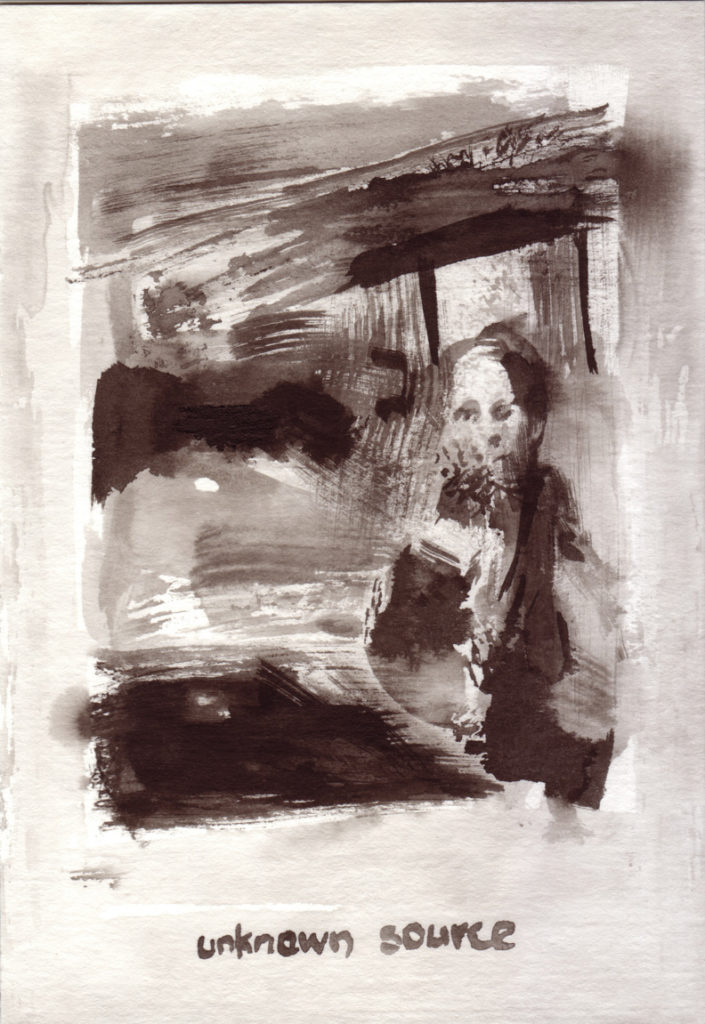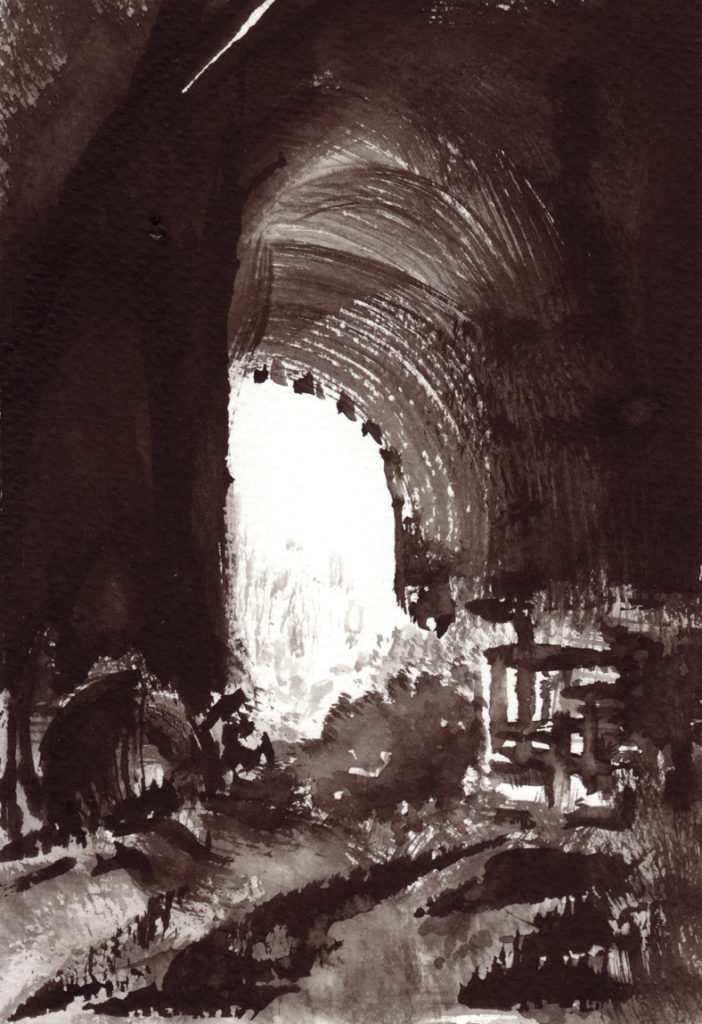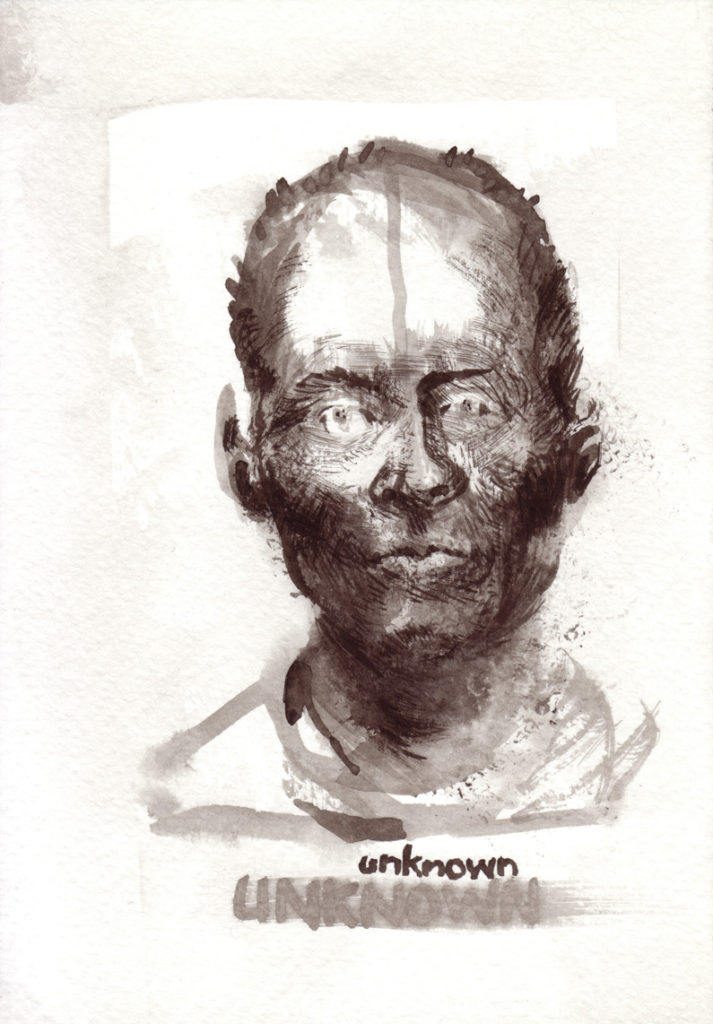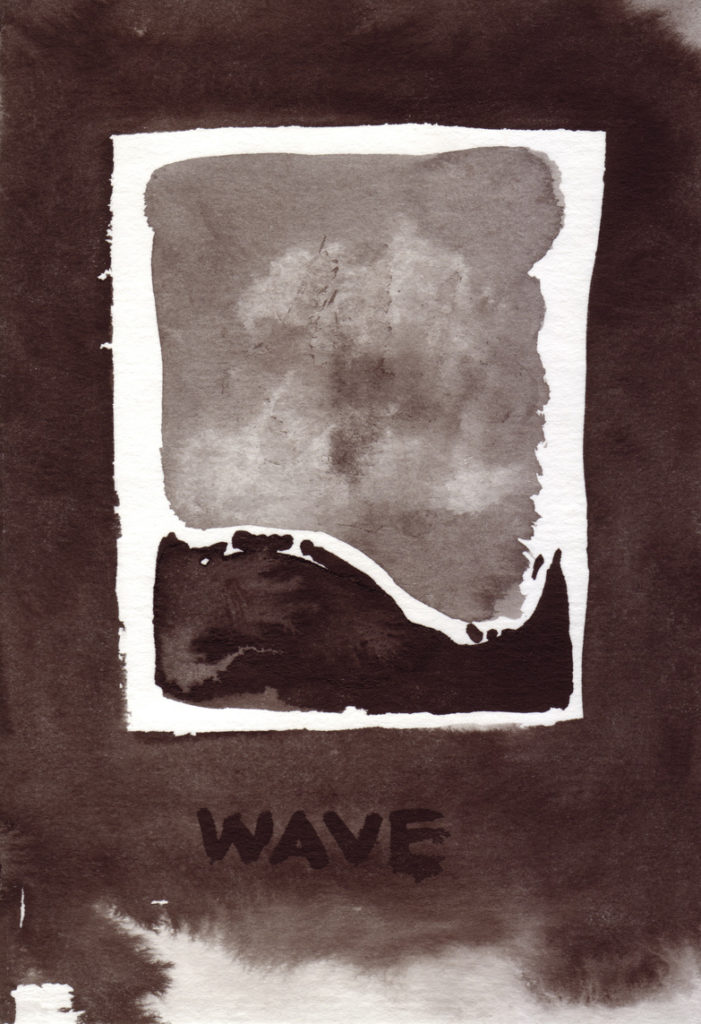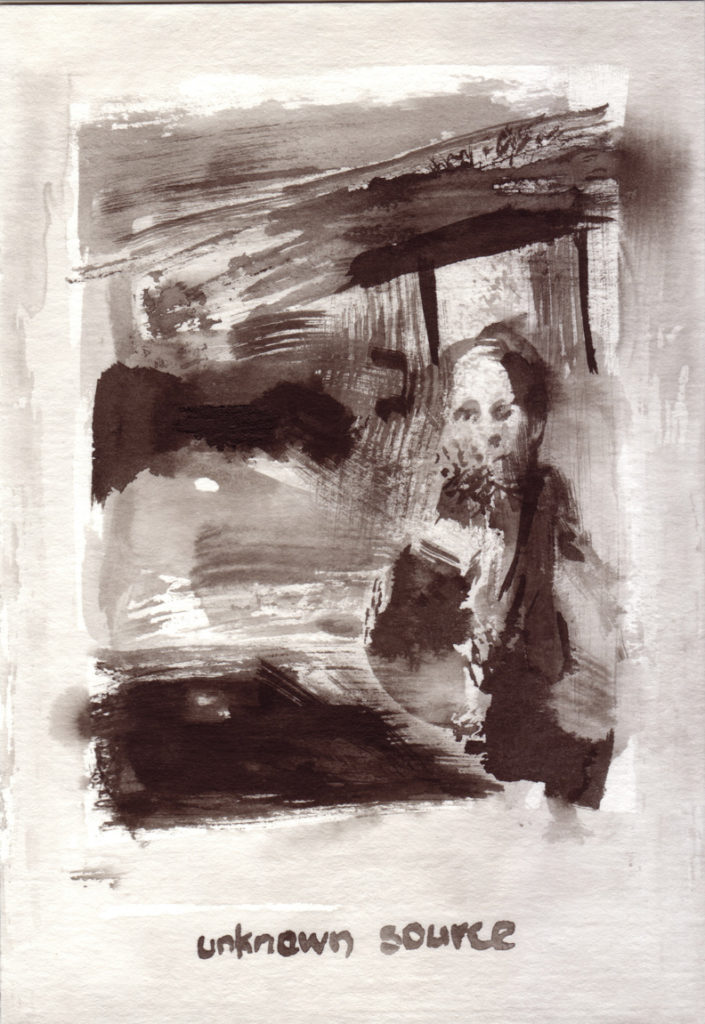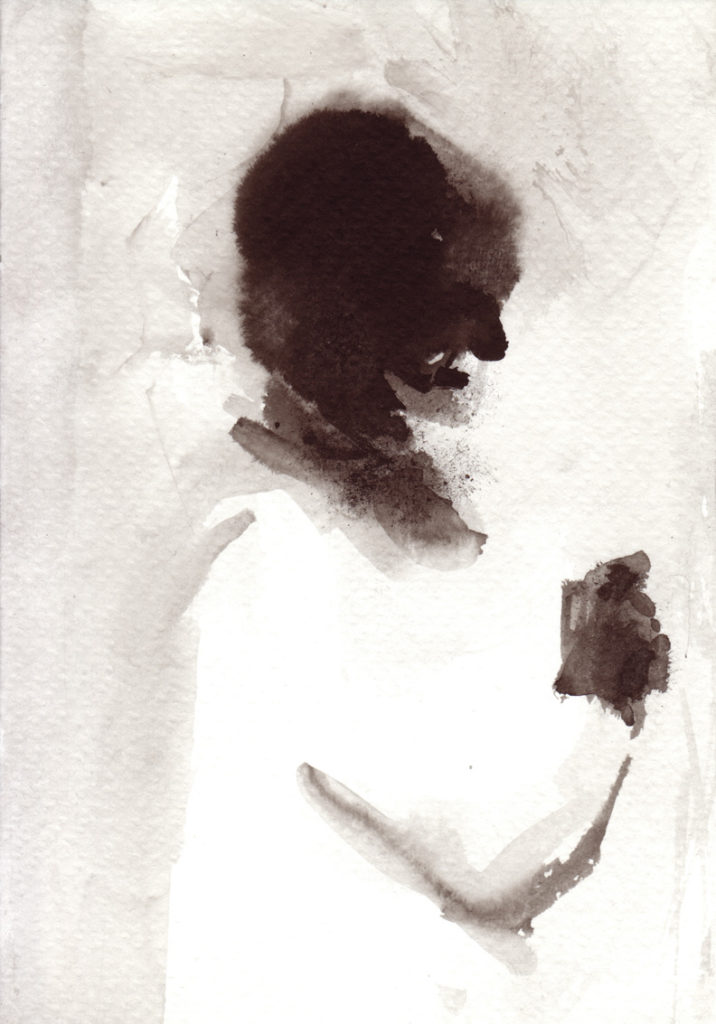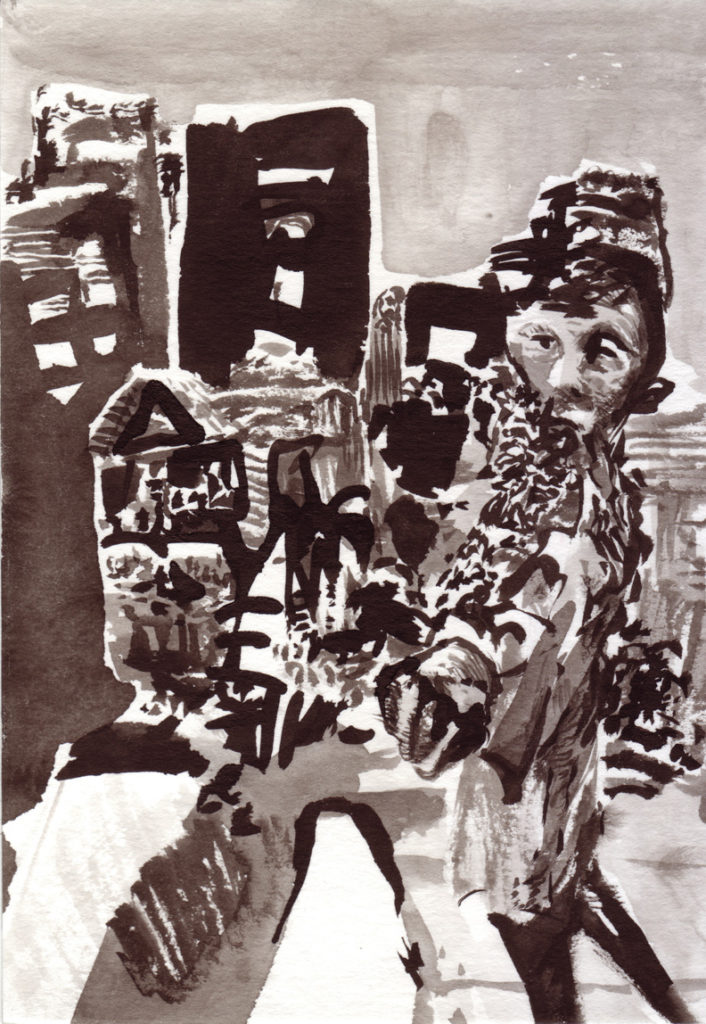Narrative, the Past, and Beyond 2
by Rey ArmenterosI had two distinct groups of work from Shinchon. Even while still living in Shinchon, I already had titles for the two sets of paintings. They were going to be Shinchon Vertical and Shinchon Horizontal — their orientation dictated everything.
For the black and white drawings, I had more to think about. I was planning for them to consist of five decks of cards. They were all vertical. And they were connected in spirit, but I felt each one was separated by ideas.
I can’t recall what my original motives for the drawings used to be; I only had a sense of what I was attempting back then, which I do recall was for the ultimate purpose of narrative possibilities. To bring this art back to life, I was thinking of a story angle, and I was planning to follow a four classical elements thing with the additional element of the Void (which was a common feature in Asian groupings of fire, wind, water, and earth). Each of my five elements was going to be a period of the story. I was naming them Airborne Shinchon, Underwater Shinchon, Hellfire Shinchon, Earthbound Shinchon, and finally Abandoned Shinchon to represent the Void. In my mind, this story was as concrete as Homer’s Odyssey, and each chapter was an element that guided the reader’s journey into all five “underworlds.” The problem was that there was little substance in these settings, as my wife had pointed out to me; a reader would only be confounded if I touted these cards as the molecules of a story.
I had to think of this differently. My wife had given me the simple idea of just making these things into basic concepts of art, like portraits and landscapes. I went back to the cards and looked at them carefully, placing the roles of portraits over this stack and that of landscapes over that stack and perhaps still lifes (for my images that were nothing more than objects) over that stack. But though I had enough portraits for a deck of a decent size, I didn’t have enough for other traditional genres of painting. So, I kept Portraits and thought about other ways in which to group the couple of hundred drawings that were left over. I had some ideas and tossed them back and forth until I got a few things I liked. For the portraits, I called them Shinchon Faces. For the drawings that had a personal text, I came up with Shinchon Thoughts. For those that had a more distanced observation, I called them Shinchon Situations. For the abstract images, I reserved Shinchon Abstractions. And for those ink washes that possessed a certain special quality of light, I titled Shinchon Light.
I wasn’t sure if any of this was gong to work. I was feeling overwhelmed. Maybe revisiting old art was a bad idea after all. The new year was coming. I put it aside for the time being to be contemplated only after it stewed out of sight for a month or so.
